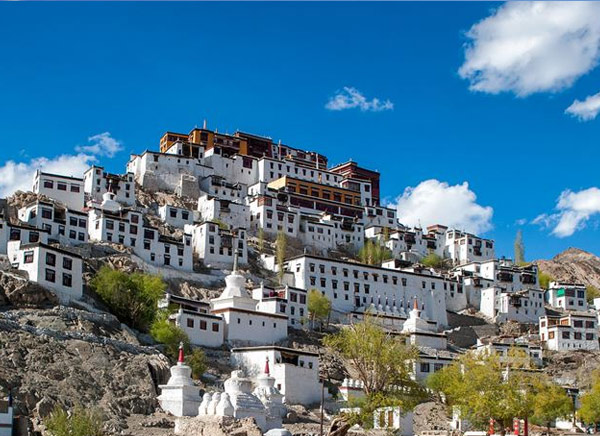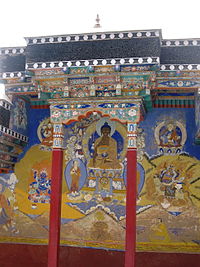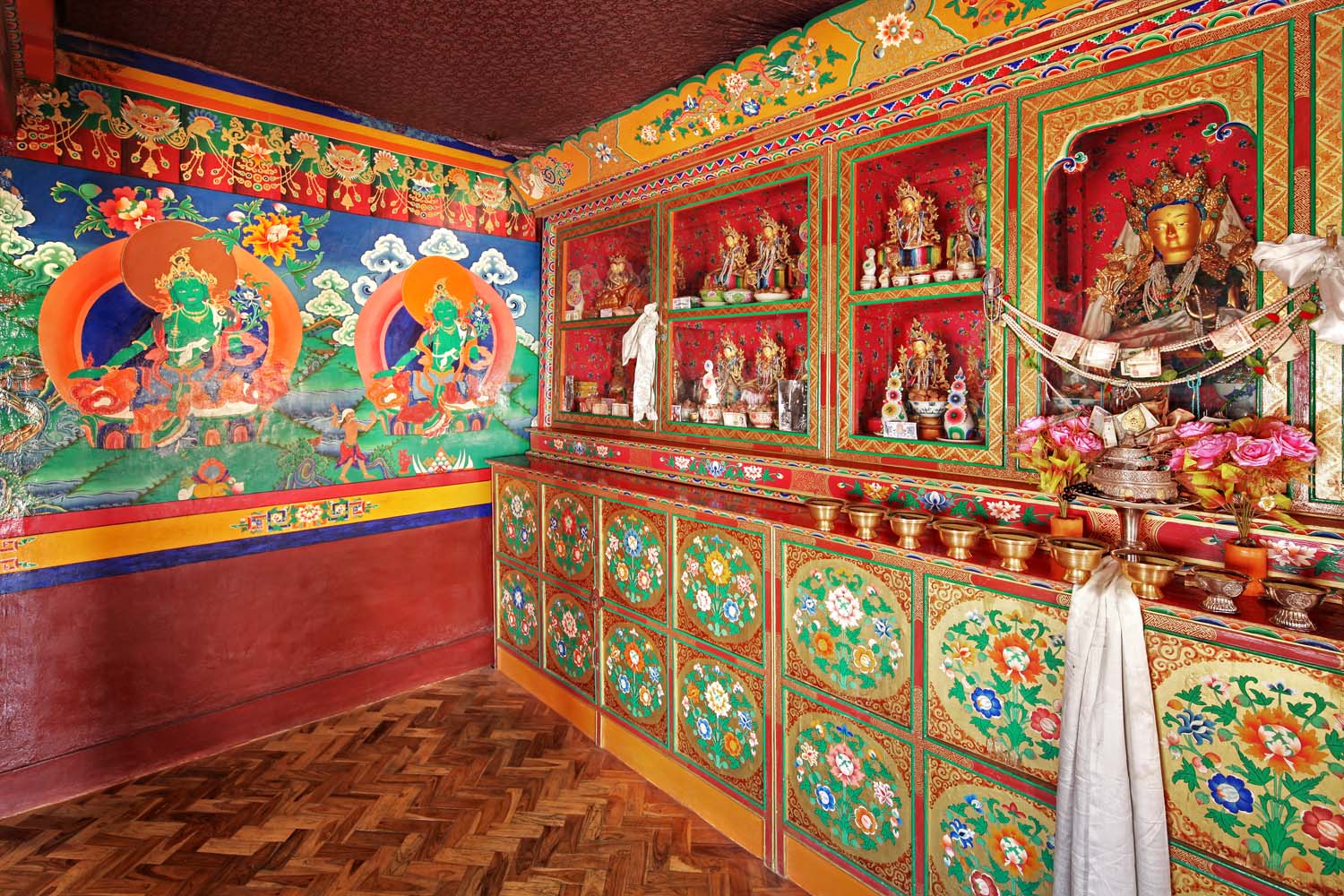Please wait ...
Thiksay Gompa, Thiksey Monastery or Thiksay monastery is a gompa of Tibetan Buddhism religion. It is located on the top of the hill. It is very famous for its similarity with Potala Palace of Lhasa. This monastery is famous for pilgrim activities, architectural elements, sightseeing and exploration. The monastery has an interesting anecdote of how it was built in this exact location.

It is said that when two Buddhist monks offered prayers and rituals at the Yellow Temple and were about to through a cake (offering to God) into the valley, a crow took away the cake and place it on a hilltop. They assumed this a divine order and built a monastery here.
Exterior
Thikse Monastery is the largest such structure in central Ladakh. Located on a hill slope, its building are arranged in an ascending order of importance and are well spaced, from the foot of the hill housing the dwelling units to the top of the hill enshrining the monasteries and potang (official residence) of the chief lama. The architecture of the monastery strongly resembles the Potala Palace in Lhasa, Tibet, the former official seat of the Dalai Lamas. Thus, Thikse Monastery is also known as 'Mini Potala'.
The courtyard and view from the Thikse monastery
The motorable approach road from the valley passes through the east side of the Thikse Monastery's main building. There is statue of the Tibetan protective deity on this path at the entrance at the lower level. The highest level of the complex has a stupa (chorten). The monastery precinct at the foot of the hill has a courtyard from where a flight of steps leads to the main monastery (one of the 10 temples here), which is 12 stories in height. It has two main chambers. The monastery is painted in red, ochre and white and houses 60 lamas. It has an attached nunnery. Like Likir and Rangdum monasteries, it was built as a fort monastery in the Central Tibetan pattern. There are excellent views across the Indus Valley flood plain both east and westbound from it, from which the gompa at Matho (to the east), the royal palace at Stok (across the valley to the south) and the former royal palace at Shey (to the west) are clearly visible.
Maitreya Buddha
One of the main points of interest is the Maitreya (future Buddha) Temple erected to commemorate visit of the 14th Dalai Lama to this monastery in 1970. It contains a 15 metres (49 ft) high statue of Maitreya Buddha, the largest such statue in Ladakh, covering two stories of the building.

The statue of Maitreya Buddha at Thikse is two storeys tall.
He is unusually portrayed as seated in the lotus position rather than his usual representations as standing or in a sitting posture on a high throne. It is the largest Buddha statue in the monastery, and took four years to build. It was made by the local artists under the master Shilp Guru Nawang Tsering of Central Institute of Buddhist Studies (Leh) - in clay, gold paint and copper.
Assembly Hall
A wall at the entrance to the assembly hall or main prayer hall depicts murals of the Tibetan calendar with the Bhavacakra (Wheel of Life). This wheel has insignia images of a snake, a bird and a pig that signify ignorance, attachment, and aversion. The purpose of this depiction is meant to remind that these earthly ties need to be overcome in order to get enlightenment in life and to prevent the cycle of death and rebirth.

Assembly Hall
The main prayer room next to this wall has many handwritten and painted books. Behind this prayer hall is the small inner sanctum of Gautama Buddha flanked by bodhisattvas, Manjusri to the right and Maitreya to the left. The assembly hall also has an image of the Thousand-armed Avalokitesvara with Padmasambhava. The centre of the assembly hall has a seat for the Dalai Lama and to its right, for the head lama and to its left, another deity is pictured. The hall also has murals of the deities Mahakala and Sitatapatra. 225 volumes of the Tengyur wrapped in silk are stored in wooden shelves in the hall.
Tara Temple
A temple is also dedicated to goddess Tara with her 21 images placed in glass-covered wooden shelves. Also, small shrines devoted to several guardian divinities including Cham-spring - the protector deity of Thikse - can also be seen between the main courtyard and the staircase. The Chi-khang has an image of the Buddha with two of his disciples and the deity Yamantaka. The courtyard mural depicts Tsong Khapa, the Buddha, Padmasambhava, Palden Lhamo and Mahakala.
Lamokhang temple and quarters
The top floor of the monastery houses the Lamokhang temple, which is a repository of numerous volumes of scriptures including Kangyur and Stangyur. Only men are allowed to enter this floor. There are big stupas and mani walls at the entry to the monastery. A small room above the temple is exclusively used as a school room to teach local boys of the villages and some of these boys are chosen as Lamas.

The top floor is also the official residence of the incarnate lama of the monastery. A large pillar engraved with the Buddha's teachings is also located here. The monastery complex has a number of white washed huts, which house the Lamas.
Festival
The annual festival held in the monastery precincts is known as the Gustor ritual, which is held from the 17th to 19th day of the ninth month of the Tibetan calendar (October–November). Sacred dances such as the mask dance or Cham dance are performed as a part of this ritual.

Another special feature is the trade fair held at the base of the monastery, in which villagers from all over Ladakh assemble to barter and trade items and socialize. Sand mandalas are made for smaller festivals. The morning prayers at 07:00, with synchronized chanting of sutras at this monastery, attract many worshippers to observe the services.